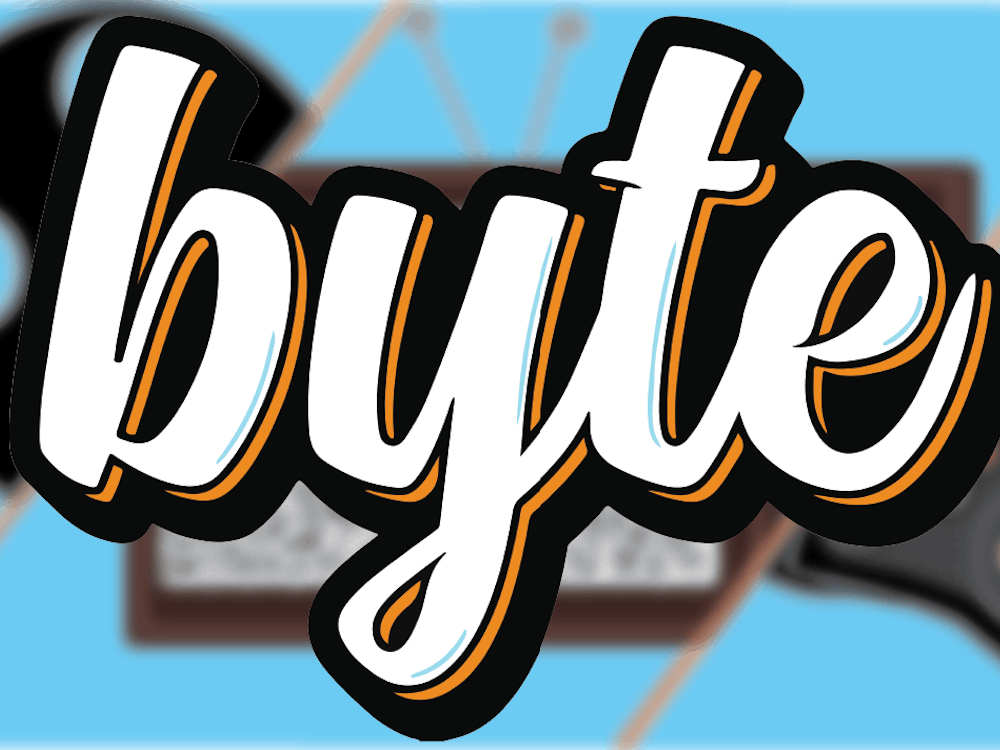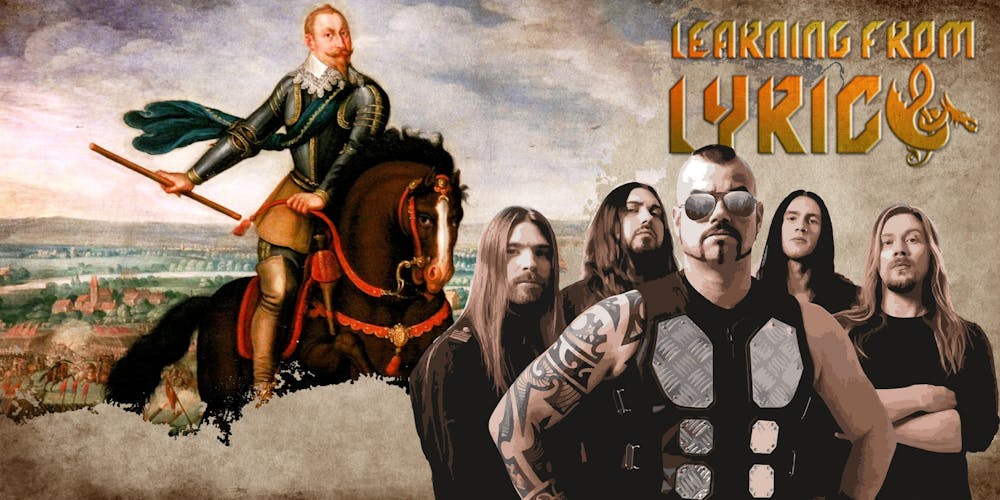Power metal, a subgenre of metal in which a band sings about fantasy, mythology, emotions, personal struggles, and even war and death. Most of the time, a story is told throughout a song, teaching listeners about a mythological god, a historical event, or the band’s personal theme.
Learning from Lyrics is a biweekly column that will choose a band and one of their songs, then break down the lyrics to fully understand the story they’re trying to tell.
Sabaton is a Swedish power metal band whose main lyrical themes are historical battles or acts of heroism throughout history. Every song they produce has some sort of historical significance.
Their song “Lion From The North” comes from their sixth studio album, Carolus Rex, a concept album detailing the rise and fall of the Swedish Empire from 1611 to 1721. The song is about Gustavus Adolphus of Sweden. Adolphus was the king of Sweden from 1611 until his death in 1632. The song focuses on his time during the Thirty Years’ War.
“A time of religion and war
Legends tell the tale of a lion
This beast in the shape of a man
With a dream to rule sea and land”
In the opening verse, the song in the lyrics above describes the Thirty Years’ War, a war fought primarily in Central Europe from 1611 to 1648. It’s considered one of the longest and most brutal wars in human history, with more than 8 million casualties caused by military conflict, famine and disease. The war started as a conflict between Protestant and Catholic states in the Holy Roman Empire after the election of Catholic Emperor Ferdinand II. Ferdinand tried to force his Roman Catholic religion on the empire.
Adolphus decided to enter the war in 1630, and historians are still unclear on why he made this decision. The line where they talk about a lion is referencing the nickname he gained during the war: The Lion of the North.
The last line in this verse, “with a dream to rule sea and land” references how he wanted to establish Sweden as a great power in Europe.
“And all those who stand in his way
Die by God and victorious arms
With the righteous that follows him south
Once more set ashore to war”
This verse is simply describing how powerful Adolphus was as a military leader. His army was made up of well-enlisted men and was a force to be reckoned with. By the end of 1631, Gustavus was now in control of most of northern and central Germany, and now had plans to conquer more territory. Germany is further south than Sweden, which also plays a role in the chorus:
“Legends have taught battles fought
This lion has no fear at heart
Lion come forth come from the north
Come from the north”
Latin is used for the second part of the chorus:
“Gustavus Adolphus
Libera et impera
Acerbus et ingens
Augusta per augusta”
According to a latindiscussion.com, the lyrics roughly translate to:
“Free and command
Harsh and great
Honors through difficulties”
The chorus is basically explaining Gustavus and how he’s considered one of Sweden’s greatest kings. Why the band chose to use Latin isn’t known; however, at the time of his reign, Latin was the primary language of the Roman Empire, which was who Adolphus and his men primarily fought against in the war.
“A storm over Europe unleashed
Dawn of war a trail of destruction
The power of Rome won’t prevail
See the Catholics shiver and shake”
The third verse explains the Thirty Years’ War and the war between the Catholics and Protestants. Gustavus and Sweden fought alongside the Protestant cause after forming an alliance with the major Protestant state of Saxony.
Adolphus and his army defeated the Catholic imperial army at the Battle of Breitenfeld in September 1631, turning the tide of the war.
“The future of warfare unveiled
Showed the way that we still walk today
Der Löwe aus Mitternacht comes
Once more he is here for war”
Adolphus is known as a pioneer of modern warfare, even earning him another nickname: Father of Modern Warfare. By the end of the 16th century, war tactics were changing to be more strategic; however, exhausting their own capacities came at a price. Adolphus wanted to improve this, and he did. His tactics included forming his infantry in three or four brigades in multiple lines, this drove back the enemy horses and created openings for advancement. He also developed a 3-pound cannon—light enough for a single horse to draw—able to fire eight rounds. His main goal was to rely heavily on tight coordination and throw off the enemies.
The third line, “Der Löwe aus Mitternacht,” once again references how important Germany and his control over most of the north and central parts of the country was during his time in the war. The German Protestants who fought under him saw him as a hero and gave him this nickname. This phrase is in German and literally translates to “The Lion of Midnight.” Land of the Midnight Sun is a name given to the lands closer to the North Pole, where the sun is still visible during midnight around the summer solstice. Sweden just so happens to be one of the lands that experiences this.
“Stories of old truth unfold
Control over Europe he holds
Freedom he’ll bring
Lion and king lion and king”
The sixth verse once again details his desire to establish Sweden as a great European power.
“Mighty eagle rule alone
Liberator claim the throne
Lion from the northern land
Take the scepter from its hand”
The “mighty eagle” they reference might be Ferdinand II. There’s no record officially stating whether he had a connection with the bird; however, Swedish historian Nils Ahnlund did reference him as such in his dissertation Gustavus Adolphus the Great.
“A 15th century prophecy averred that a series of disasters would end only when a golden lion emerged from the north to defeat the eagle of devastation. Sweden’s King Gustavus Adolphus, with his flowing blond hair and unfailing courage, won the title ‘Lion of the North’ among his countrymen, his allies and his enemies.”
On Nov. 16, 1632, Gustavus Adolphus led his army against Catholic general Albrecht von Wallenstein and his army at Lützen. While leading a cavalry charge, Gustavus became separated from his men and was shot multiple times and killed. His legacy still lives on in Sweden. He rewrote the rulebook on war which inspired future military leaders like Napoleon Bonaparte. This mighty lion established Sweden as a major European power and laid the tracks for future generations to build an amazing empire that lasted more than a century.
As you can see, Sabaton puts a lot of time and research into their songs. Even though the song doesn’t come right out and explain everything I mentioned about Adolphus in their song, references to these aspects are heard in the lyrics. No matter which Sabaton song you choose to listen to, you’ll always learn something from their lyrics.
Sources: Sabaton, HIstorynet
Featured Image: Tt Shinkan



















